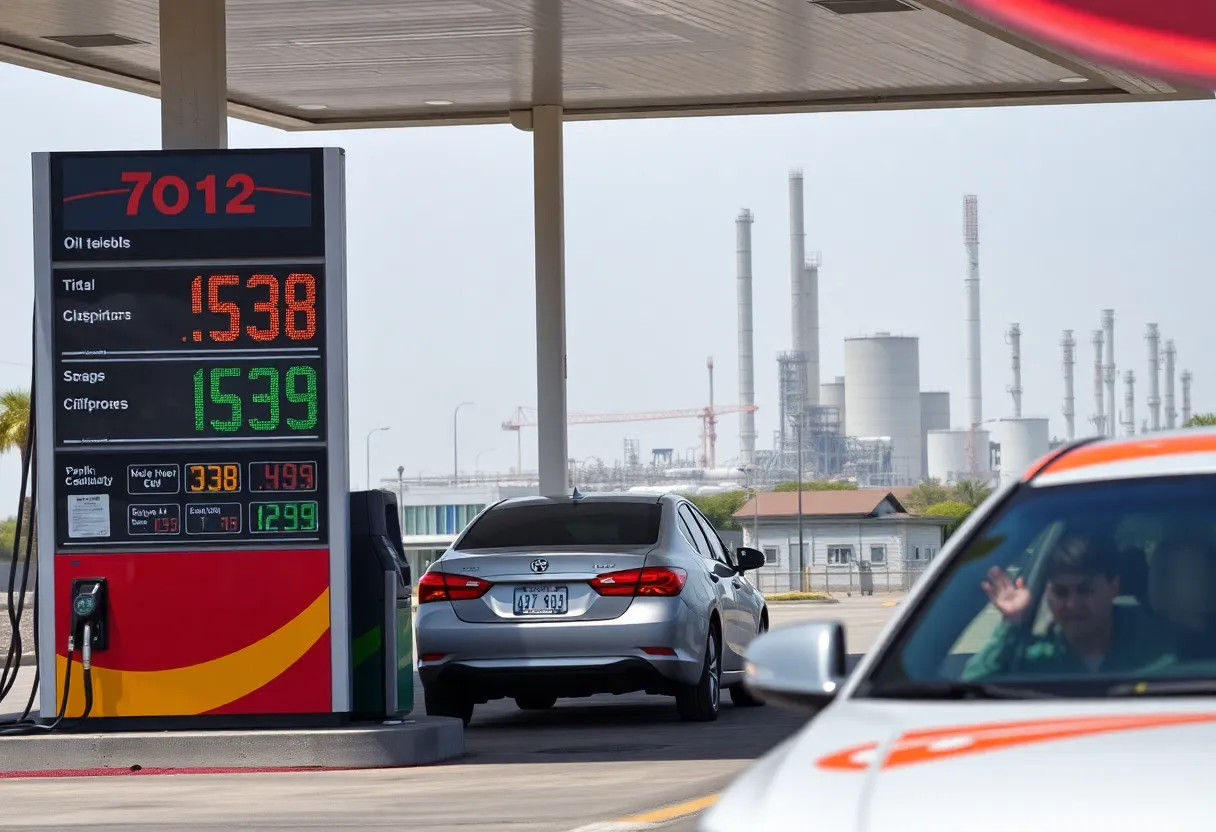News Summary
California lawmakers are sounding alarms over potential gas prices surging due to the impending closures of two major oil refineries. Valero’s Benicia and Phillips 66’s refinements are set to close by 2026, risking a 20% reduction in gasoline supply. Current gas prices are nearing $5 per gallon, with predictions of prices exceeding $8 by next year, raising concerns about the state’s energy future and its impact on consumers.
California lawmakers are raising alarms over a potential gas crisis as two major oil refineries—Valero’s Benicia Refinery in the Bay Area and Phillips 66’s refinery in Southern California—recently announced plans to close operations. The impending closures, set to occur in April 2026 for Valero and within the next year for Phillips 66, could result in a dramatic 20% reduction in the state’s gasoline supply.
Current gas prices in areas like Walnut Creek are just below $5 per gallon, but some drivers are experiencing costs upwards of $100 to fill their tanks. As the state braces for a possible price surge, estimates predict that California’s gas prices could exceed $8 per gallon by next year, an increase of up to 75% according to findings from the University of Southern California.
This news has triggered concerns among state officials, particularly as both Valero and Phillips 66 account for nearly 18% of California’s crude oil capacity. Lawmakers, including Democratic Assemblymember Connie Petrie-Norris, have questioned why refineries are ceasing operations despite high profit margins in recent years. Experts, like UC Berkeley’s Severin Borenstein, caution that if these refinery closures proceed, Californians may be faced with an abrupt and significant increase in gas prices.
Implications for Supply and Demand
As gas consumption in California is projected to decline, industry analysts warn that the pace of refinery capacity reductions may soon surpass this decrease in demand. With California’s stringent regulatory environment, which is considered among the toughest in North America, some companies face challenges in meeting operational expectations. As of 2024, the state imports 63.5% of its oil supply, a further complicating factor in the supply-demand dynamics that drive fuel prices. Consulting firms attribute rising fuel costs directly to these supply disruptions and overall market conditions.
State Government Response
In light of these developments, California Governor Gavin Newsom has outlined a roadmap to phase out gas-powered vehicles by 2035, an initiative aimed at reducing emissions. However, federal political opposition complicates the implementation of this ambitious goal. Meanwhile, new legislation introduced by the Governor aims to keep tabs on gas prices and curb price gouging practices that may arise during the potential crisis.
After orders of closure were announced, Newsom emphasized the importance of collaboration with refineries to safeguard a stable gas supply for California residents. Although some forecasts hint at a temporary alleviation of gas prices during the upcoming summer driving season, overall predictions for the long-term price trajectory remain pessimistic. As lawmakers and residents alike navigate this uncertain landscape, the state’s oil consumption policies, refinery operational challenges, and broader economic pressures will play critical roles in shaping California’s energy future.
Deeper Dive: News & Info About This Topic
- Kron4: Gas Prices Could Soar with Refineries Closing in California
- CBS News: California Gas Prices Could Surge
- Mercury News: Will California’s High Gas Prices Go Even Higher?
- Wikipedia: California
- Newsweek: California Gas Prices
- Encyclopedia Britannica: Energy in California

Author: STAFF HERE HOLLYWOOD
The Hollywood Staff Writer represents the experienced team at HEREHollywood.com, your go-to source for actionable local news and information in Hollywood, Los Angeles County, and beyond. Specializing in "news you can use," we cover essential topics like product reviews for personal and business needs, local business directories, politics, real estate trends, neighborhood insights, and state news affecting the area—with deep expertise drawn from years of dedicated reporting and strong community input, including local press releases and business updates. We deliver top reporting on high-value events such as the Hollywood Bowl summer concerts, the Hollywood Christmas Parade, film premieres at TCL Chinese Theatre, and festivals at the Magic Castle. Our coverage extends to key organizations like the Hollywood Chamber of Commerce and Visit Hollywood, plus leading businesses in entertainment, dining, and tourism that define the local economy. As part of the broader HERE network, including HERELosAngeles.com, HEREBeverlyHills.com, HEREAnaheim.com, and HEREHuntingtonBeach.com, we provide comprehensive, credible insights into Southern California's dynamic landscape.





